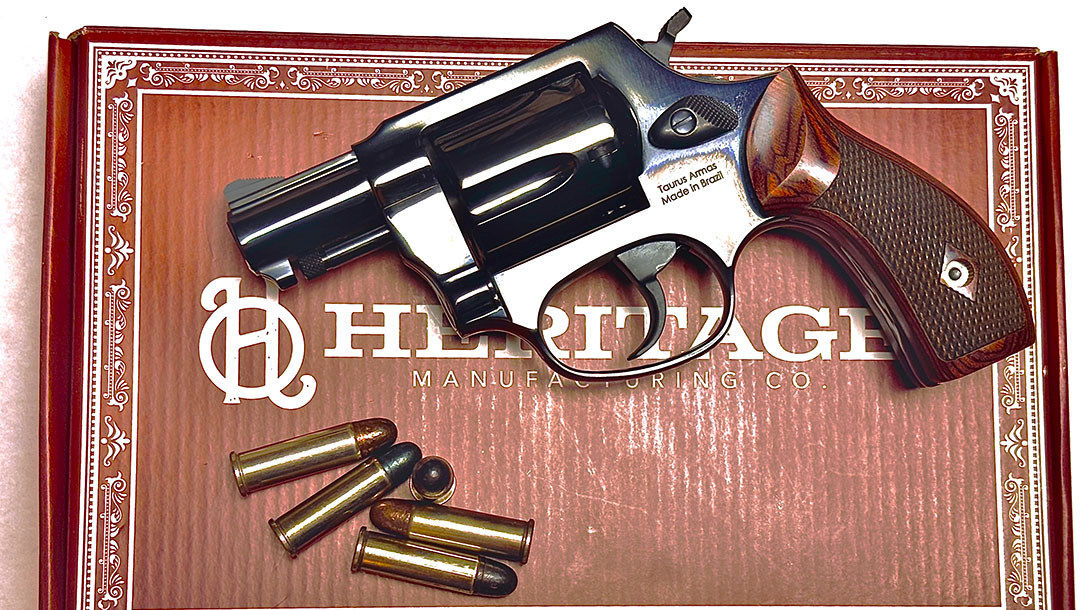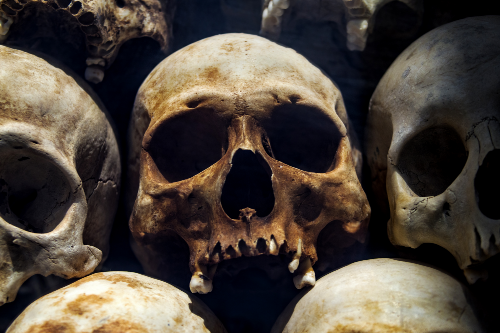According to the Merriam-Webster Dictionary, the slang term “Roscoe” was first used to denote a handgun around 1914. It became a popular term in the pulp-fiction private-eye stories of the 1920s and 1930s. And now Heritage Firearms is bringing the term back into modern culture with its new Roscoe revolver.
The Heritage Roscoe
When most people envision a “Roscoe” from back in the day, the image of a Colt Detective Special or other short-barrel revolver or pistol might come to mind. Classic snub-nose .38 Special revolvers include the aforementioned Detective Special or the Smith & Wesson Chiefs Special. Both have 2-inch barrels.
It is in this vein that Heritage Manufacturing named its new snub-nose .38 the “Roscoe.”
A New Wheelgun Re-Birth
What makes a manufacturer that for years has produced mostly budget-priced .22 single action (SA) revolvers suddenly come on the market with a new short-barrel double action (DA) revolver in .38 Special? Obviously, it’s because the market for this kind of product is increasing.
In the past 6-7 years, Colt, Kimber, S&W, and several others have come out with new concealable small-frame revolvers. In my opinion, the contours and configuration of a small-frame revolver make it perfect for pocket or ankle carry.
They’re easy to pack in an IWB or OWB holster, and the size and weight appeal to me due to my physical limitations. While they are not beginners’ guns, they are reliable and accurate despite their short barrels.
The new Heritage Roscoe is a throwback to the S&W Chiefs Special that debuted in 1950 and later became known as the Model 36. For many years, this all-steel SA/DA revolver has been built on the J-frame platform. It was chambered for the .38 Special, and the cylinder held 5 cartridges. Additionally, it had fixed sights, a round-butt grip-frame, Magna-style checkered walnut stocks, and an exposed hammer. It was and still is popular and viable.
There is little wonder that Heritage chose this classic snub-nose to use as a model for its Roscoe. It too is a traditional SA/DA revolver, produced as an all-steel, small-frame design, with fixed sights, a round-butt grip-frame, wood stocks, and an exposed hammer.
The cylinders on both guns rotate counterclockwise. Where the Chief weighs 19 oz. the Roscoe weighs 20.8 oz.
Differences Between the Chief and the Roscoe
There are several notable differences between the Chief and the Roscoe. Both have two points of lock-up for the cylinder. The Chief locks at the rear of the cylinder and at the front of the ejector rod. However, the Roscoe locks at the rear of the cylinder and on the yoke or crane. What resembles a locking point below the barrel is a lug that offers some protection to the ejector rod.
I like the 1/8-inch serrated front sight on the Roscoe. It mates well with the square-notch, fixed rear sight. Likewise, kudos for the shape of the thumb piece/cylinder release latch. The bottom is nicely rounded with no sharp edges to nick the thumb during recoil.
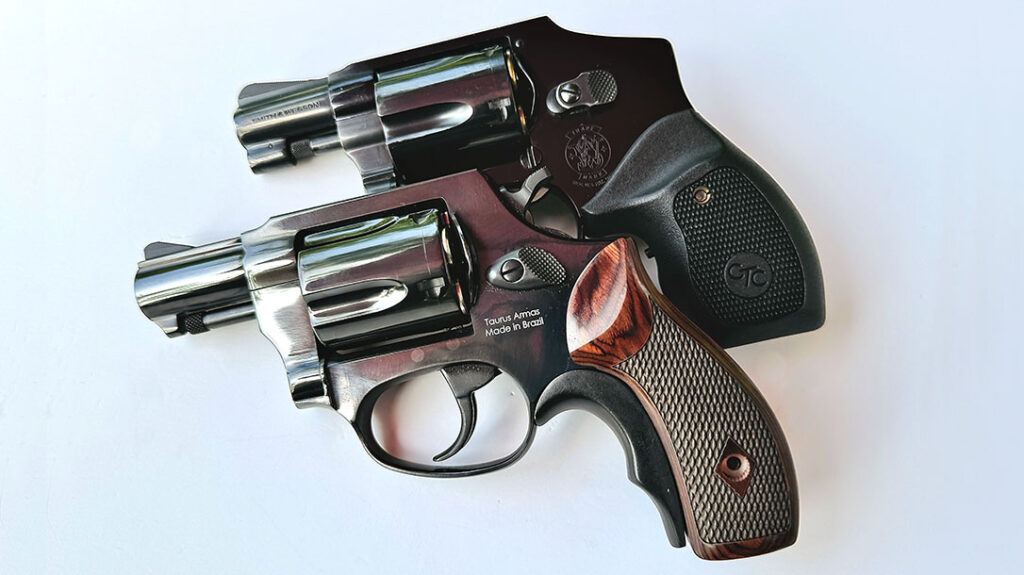
It has a smooth-faced trigger that is ¼-inch wide and a short hammer spur that is deeply checkered. The wood stocks appear to be laminate, nicely checkered, with a pleasing grain and color. What really stands out is the polished blue finish, and the metal-to-metal fit is outstanding.
By the way, the Roscoe is rated for .38 Special +P cartridges.
Readying the Roscoe for the Range
The first thing I did to make the Roscoe more compatible with my medium-sized hand was to install a grip adapter from B.K. Grips. I find that factory service-type stocks generally work well for me once they’re fitted with a grip adapter to fill in the area behind the trigger guard.
Next, I ordered a Revolver OWB holster from Versacarry. This model is made for the J-frame from Water Buffalo leather with a distressed brown color and a black patch. It’s a high-ride, pancake style, with wide, 2-inch belt notches and an adjustable tension screw in the trigger guard area.
I mated it with a Barranti Leather Co. SS Spare Pouch. This OWB pouch will hold a speed strip with up to six cartridges in .38 Special. I ordered mine in black leather to fit a 1-3/4-inch belt. For this T&E, I used a Swift Strip from DeSantis Gunhide. It’s made of black neoprene, holds six .38 rounds, and has a serrated tab.
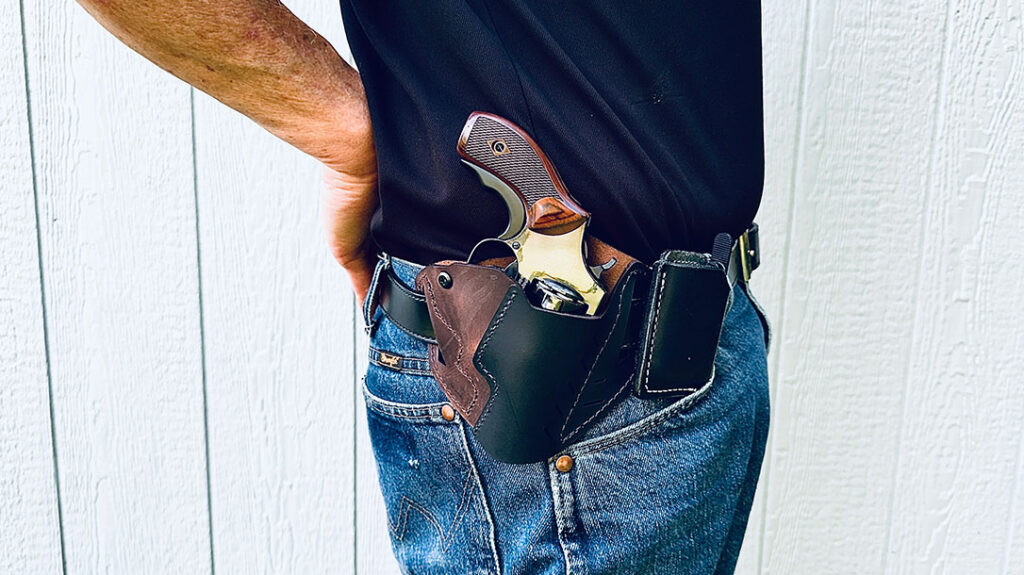
For .38 Special ammunition, I selected a couple of traditional loads. The first was a 148 gr. wadcutter from Black Hills Ammunition, which was once called a mid-range target cartridge. Next was a 158 gr. round-nose lead bullet from Remington-UMC, which was once a standard police service load.
In the realm of modern self-defense ammo, I chose Cor-Bon DPX, which has a 110 gr. solid copper HP bullet at +P pressures. Then there’s the Hornady Critical Defense Lite load with a 90 gr. FTX bullet—a JHP design with a polymer plug in the hollow nose. Last up is the SIG Sauer Elite Performance +P ammunition with a 125 gr. V-Crown JHP bullet.
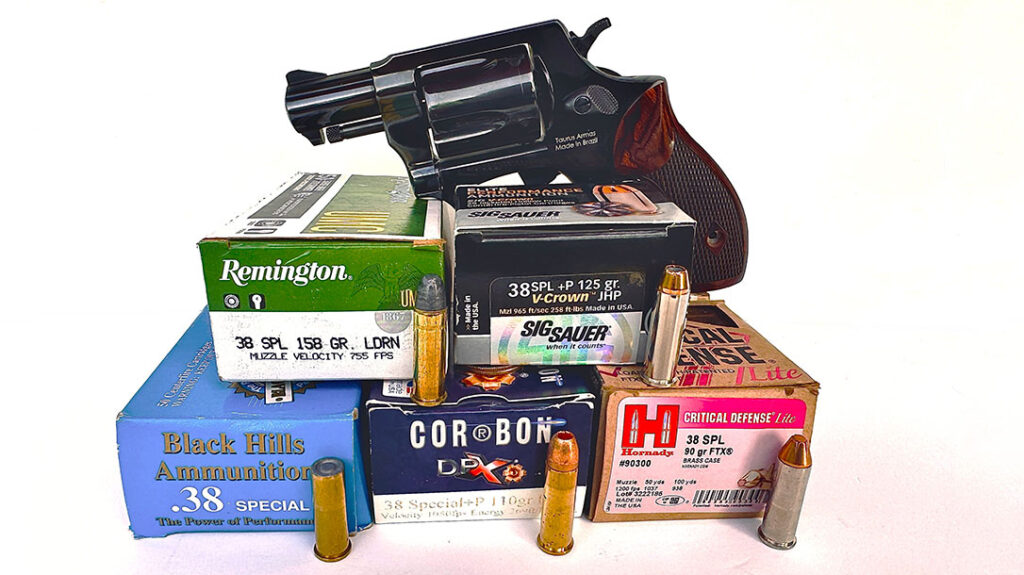
Shots Fired
First in the T&E process was velocity testing with my Oehler Model 35P chronograph. The data can be seen in the accompanying performance table (below). Given the short barrel and subsequent short sighting radius of the Roscoe, I did my accuracy evaluation at 10 yards from the bench, using a sandbag rest, and in SA mode. My oval-shaped bullseye targets had a red aiming center.
I found that the Roscoe was on the money windage-wise. However, elevation-wise, I had to vary my point of aim based on the bullet weight.
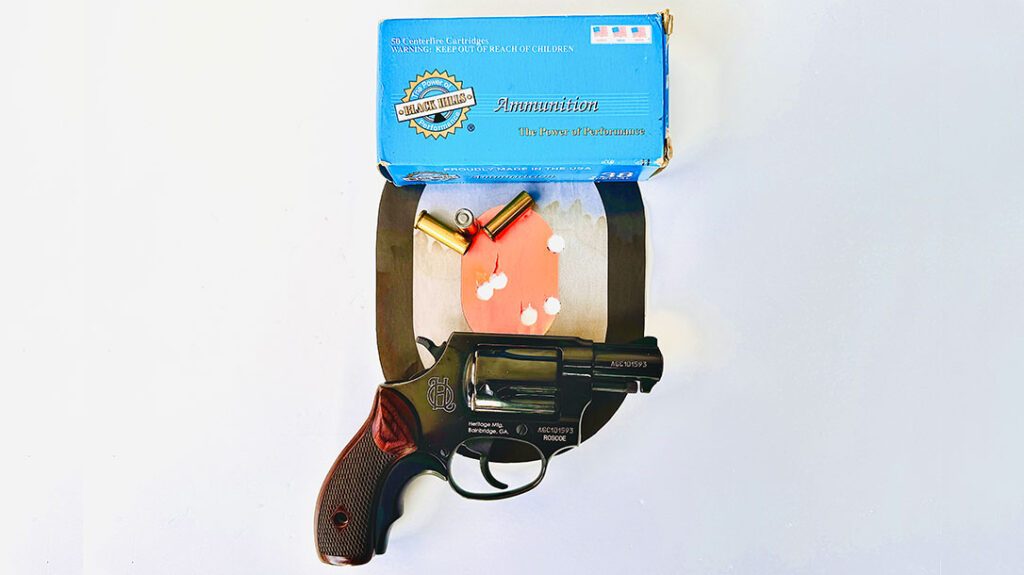
Overall, the point-of-aim/point-of-impact was good. Accuracy was also helped by a crisp SA pull that had a weight of about 4 lbs. I shot three 5-shot groups with each brand of cartridge.
My best 5-shot group was made using the Black Hills wadcutter load. The 5-shot cluster measured 1.70 inches, and the 3-group average was 2.35 inches. Second place went to the Cor-Bon DPX load with a 1.90-inch group and a 2.31-inch average. The group average for all five loads came to 2.33 inches, which is not bad for a 2-inch barrel.
Practical Shooting Course
I modified a 30-round qualification course I often use for a practical shooting course using double-action shooting only. With the Versacarry holster and Barranti SS Spare pouch on my belt, I loaded the Roscoe with five rounds and put five rounds in the DeSantis Swift Strip.
A mix of the five .38 Special test rounds was used for the course. A realistic “bad guy” target was sent down-range to the 3-yard line.
First, I drew and fired all five shots, strong-hand only, using a point-shoulder stance sans sights. Then, after a quick reload, I transitioned the revolver to my other hand and fired it using my support hand only.
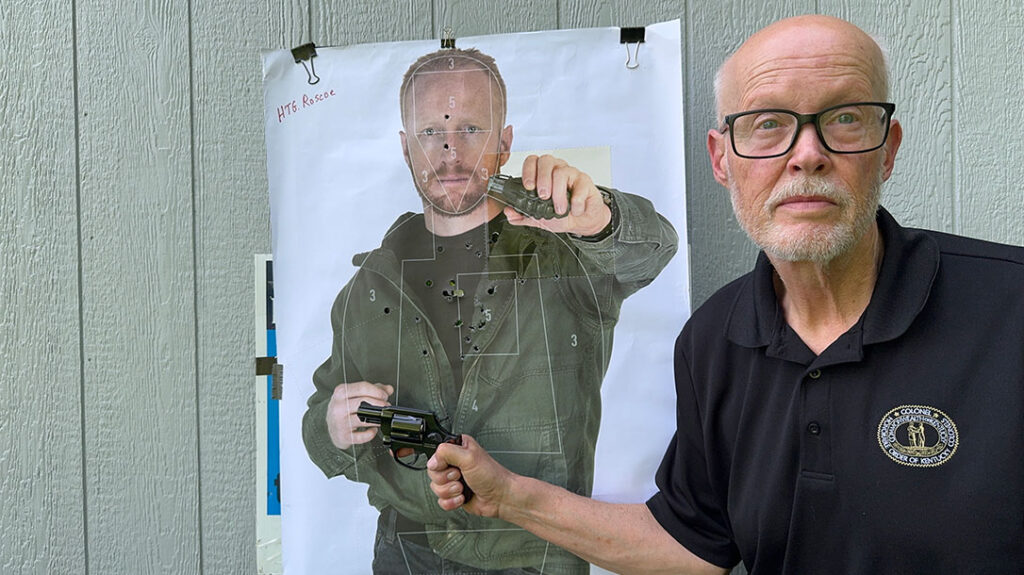
The target was then moved to 7 yards. Here, I fired a single shot center-mass, then went to low-ready and shot two strings of double-taps using the sights. I then reloaded and fired two shots center-mass and one to the head.
Next, I shot one round center mass and one to the head. After a reload, I fired five shots center-mass as quickly as I could using the sights. Lastly, with the target at 10 yards, I fired two shots left-side barricade, two shots right-side barricade, and one shot kneeling, right-side barricade.
Plusses and Minuses
I scored 132 out of a possible 150 points during the practical course. The target had light-colored markings showing the scoring areas. I dropped four rounds into the 3-Zone and ten rounds into the 4-Zone (lung area). The remainder of my hits were in the heart and head 5-Zones.
The bad guy wore dark clothing, which made the fixed sights hard to see. As I wouldn’t be wearing shooting glasses on the street, I put on my regular glasses and decided that painting the rear serrated side of the front sight bright yellow would be a great help.
My biggest criticism with the Roscoe was the wood stocks on the left side. The upper portion by the thumb piece is a good ¼-inch thick. Invariably, when ejecting spent cartridge cases, one of two would hang up between the cylinder’s rear and the grip panel’s top edge.
The stock/grip design also does not lend itself well to speed-loader use. I tried a J-frame HKS speedloader, and getting the two rounds into the cylinder closest to the grips was difficult.
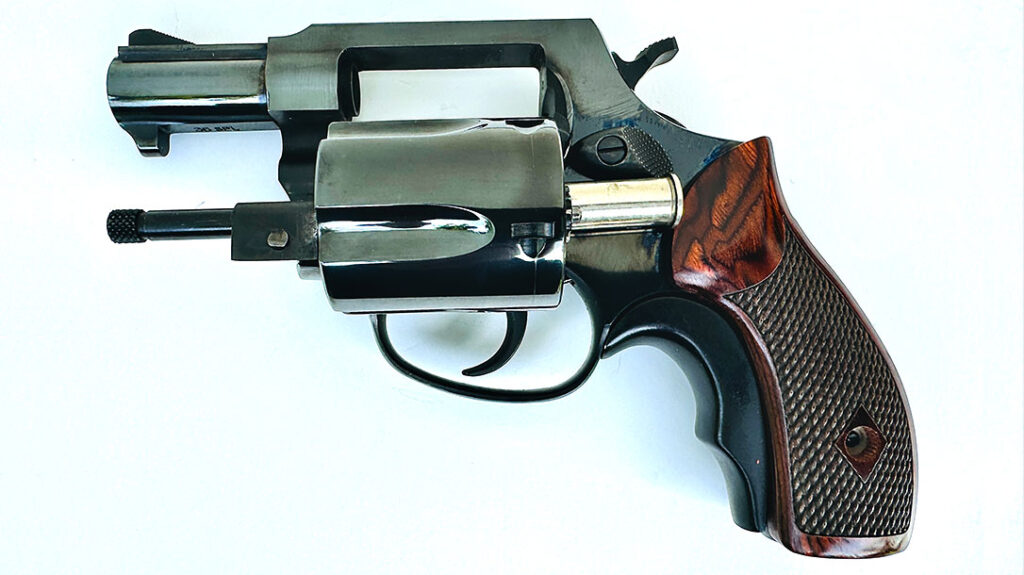
On the bright side, the double-action trigger pull was smooth, with about a 13-pound pull, and helped with rapid-fire accuracy. In addition, the well-designed thumb piece did not give me a case of “J-frame Thumb.”
The checkering on the stocks combined with the grip adapter allowed me to have good control while shooting quickly. Likewise, I didn’t feel like recoil and muzzle flip was excessive in the 20.8 oz. 5-shooter.
Other than the difficulty with the grip design, the Roscoe ran just fine. If I were in the market for a small-frame .38 Special revolver, I would certainly give it all due consideration.
For more information, please visit HeritageMfg.com.
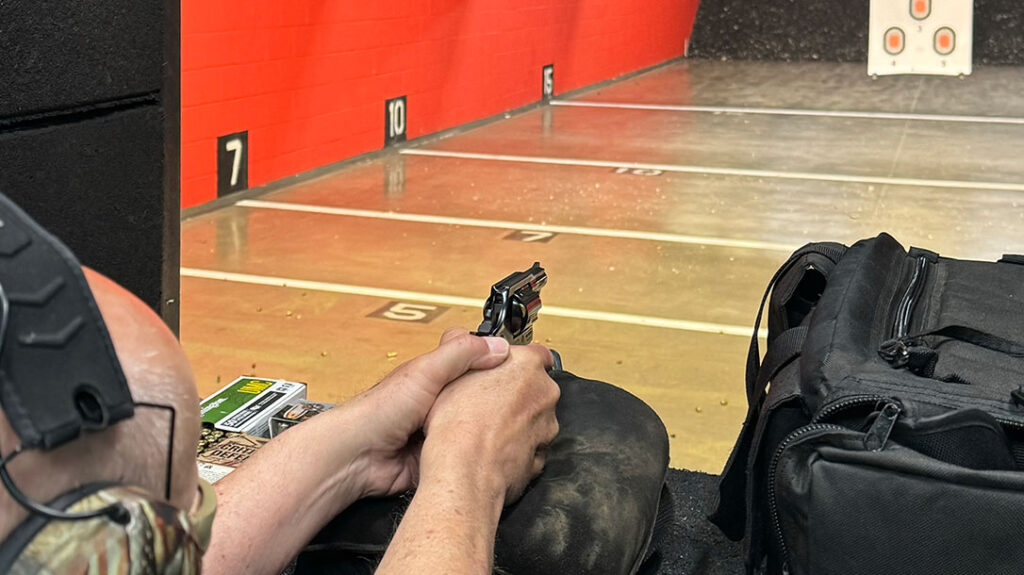
Heritage Roscoe Specs
| Mechanism | SA/DA revolver |
| Caliber | .38 Special +P |
| Capacity | 5 cartridges |
| Barrel | 2.0 inches |
| Overall Length | 6.55 inches |
| Empty Weight | 20.8 ounces |
| Sights | Fixed rear, serrated ramp front |
| Finish | Polished blue |
| Stocks | Laminated checkered wood |
| MSRP | $363.99 |
Performance
| Cartridge | Ave. Velocity | Best Group | Average Group |
| Black Hills 148 gr. Wadcutter | 709 FPS | 1.70” | 2.35” |
| Cor-Bon 110 gr. DPX-HP +P | 1046 FPS | 1.90” | 2.31” |
| Hornady Critical Defense 90 gr. FTX-HP | 1083 FPS | 1.92” | 2.24” |
| Remington UMC 158 gr. LRN | 698 FPS | 2.35” | 2.60” |
| SIG-Sauer Elite 125 gr. V-Crown HP +P | 865 FPS | 2.16” | 2.19” |
Bullet weight measured in grains, velocity in feet per second 10 ft. from the muzzle by an Oehler Model 35P chronograph, and accuracy in inches for three 5-shot groups at 30 feet.
Didn’t find what you were looking for?
Read the full article here

